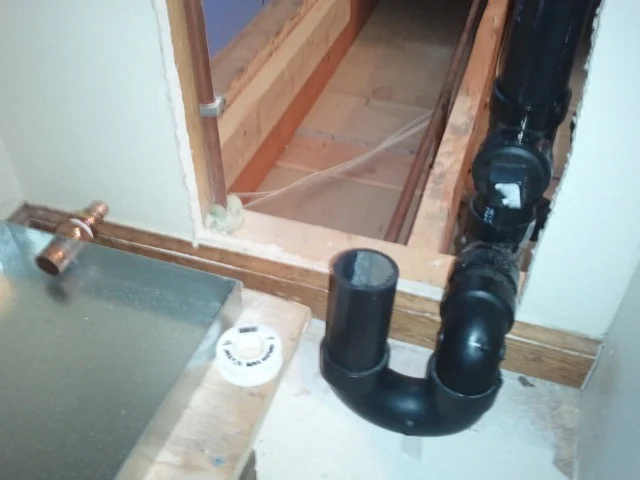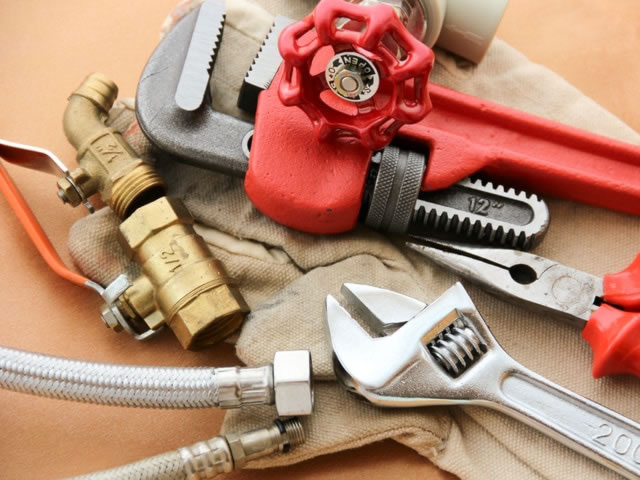Small bathrooms pose a unique set of challenges, from limited space to the need for efficient storage solutions. When it comes to plumbing, the constraints of a small bathroom can make tasks like installation, maintenance, and upgrades more complex. However, with careful planning and a bit of ingenuity, you can ensure that your small bathroom remains functional, stylish, and free of plumbing issues. Here are some essential plumbing tips to help you get the most out of your compact space.
1. Choose Space-Efficient Fixtures
In a small bathroom, every inch counts. Opting for space-efficient fixtures can make a significant difference. For example:
- Compact Toilets: Look for toilets designed for small spaces. These models are often more compact but still offer comfort and efficiency.
- Wall-Mounted Sinks: These sinks are mounted to the wall and do not require a pedestal or vanity, freeing up floor space and creating a more open feel.
- Corner Sinks: Perfect for tight spaces, corner sinks make use of otherwise wasted corners.
2. Install a Floating Vanity
Floating vanities are another excellent choice for small bathrooms. By mounting the vanity to the wall, you can create the illusion of more space and make cleaning easier. Ensure that the plumbing is appropriately managed behind the wall to avoid any leaks or maintenance issues. Visit their page where you will find lots of great information and practical advice about clogged drain repair.
3. Opt for a Shower Instead of a Bathtub
Bathtubs take up considerable space, so consider installing a shower instead. Modern shower designs can be very compact while still providing a luxurious experience. Frameless glass shower doors or open, walk-in showers without doors can also make the space feel larger and more open.
4. Utilize Vertical Space
Maximizing vertical space is crucial in small bathrooms. Install shelves above the toilet or above the sink to store toiletries, towels, or other bathroom essentials. This helps keep the counter and floor clear, maintaining a clean and organized appearance.
5. Incorporate Plumbing Concealment
Exposed plumbing can make a small bathroom feel even more cramped. If possible, conceal pipes within cabinetry or walls. Use access panels for maintenance, and consider custom cabinetry that accommodates plumbing fixtures while providing additional storage.
6. Consider Water-Saving Fixtures
Water-saving fixtures are beneficial for any bathroom, but they are especially important in small spaces where efficiency is key. Look for:
- Low-Flow Toilets: These toilets use less water per flush, helping to reduce your water bill and environmental impact.
- Low-Flow Showerheads: Similar to low-flow toilets, these showerheads reduce water usage without sacrificing performance.
- Water-Efficient Faucets: Modern faucets can be equipped with aerators that reduce water flow while maintaining pressure.

7. Pay Attention to Ventilation
Proper ventilation is critical in small bathrooms to prevent mold and mildew buildup. Ensure you have an adequate exhaust fan installed to remove moisture and odors. For bathrooms without a window, a high-quality exhaust fan is essential. Choose a fan that is appropriately sized for your bathroom to ensure effective ventilation.
8. Address Drainage Issues Promptly
In small bathrooms, drainage issues can quickly become a major problem. Regularly check for any signs of slow drainage or clogs. Use drain covers to prevent hair and debris from entering the pipes, and consider a weekly maintenance routine involving a gentle drain cleaner or a mixture of baking soda and vinegar to keep the pipes clear.
9. Be Strategic with Pipe Insulation
Pipe insulation can help prevent freezing in colder climates and reduce noise from running water. In a small bathroom, where pipes may be exposed or close to walls, insulating them can prevent potential issues and improve comfort.
10. Professional Help for Complex Issues
While DIY plumbing projects can be manageable, certain tasks are best left to professionals. If you’re dealing with major plumbing work, such as relocating pipes or fixing significant leaks, consult a licensed plumber. They have the expertise to handle complex issues efficiently and avoid costly mistakes.
11. Plan for Future Needs
When designing or renovating a small bathroom, think about future needs. While it’s essential to maximize space now, consider whether your needs might change in a few years. Installing extra plumbing or leaving space for future upgrades can save you from major renovations down the line.
12. Regular Maintenance
Regular maintenance is key to keeping your small bathroom’s plumbing in top shape. Schedule periodic inspections to check for leaks, ensure proper function, and address any potential issues before they become major problems. Keeping up with maintenance helps prevent unexpected disruptions and extends the life of your plumbing fixtures.
13. Mind the Aesthetics
In small bathrooms, aesthetics play a crucial role in creating a pleasing environment. Choose plumbing fixtures that complement the overall design of your bathroom. Modern finishes like chrome, brushed nickel, or matte black can add a touch of elegance without overwhelming the space.
Conclusion
Small bathrooms may present unique plumbing challenges, but with thoughtful planning and strategic choices, you can make the most of your space. From selecting the right fixtures to ensuring proper ventilation and regular maintenance, these tips will help you create a functional, efficient, and stylish small bathroom. Remember that every detail counts in a compact space, and a well-considered approach can transform your small bathroom into a comfortable and pleasant retreat.


